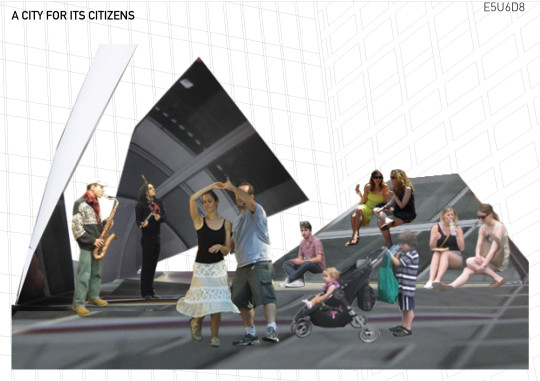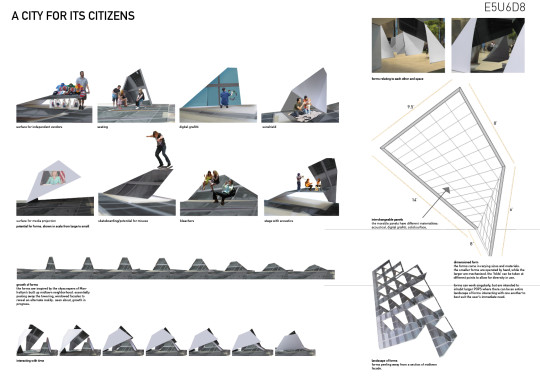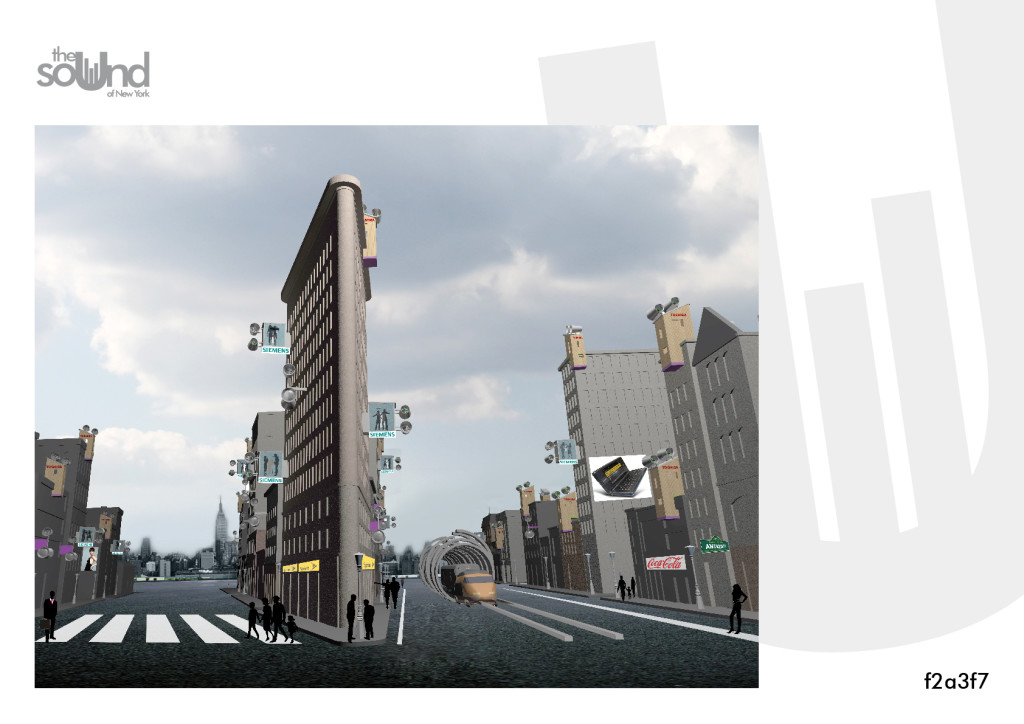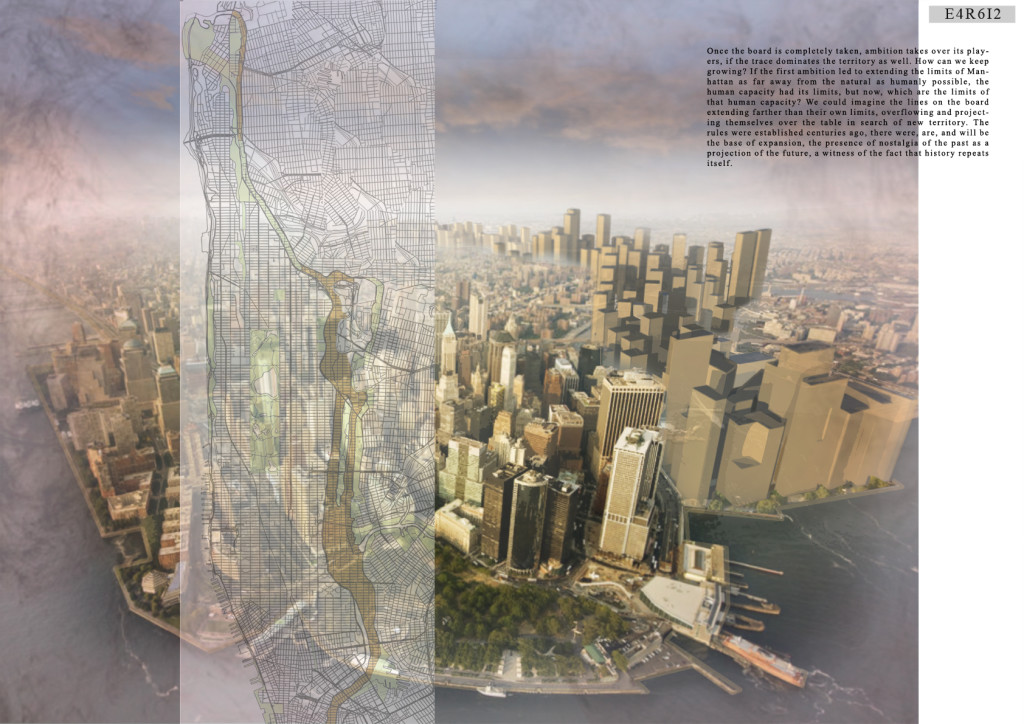Info:
Title: A City for its Citizens - Code: E5U6D8Contest: NY / 2012
By: M. Driessen
Views: 2737 Likes: 0
Votes:
JOSHUA PRINCE-RAMUS4 EVA FRANCH I GILABERT4 ROLAND SNOOKS0 SHOHEI SHIGEMATSU1 ALESSANDRO ORSINI3 MITCHELL JOACHIM02.0
A City for its Citizens

 Our vision and designated paths meet solid walls like those of a pinball frantically bouncing within its fixed box. I wonder why we comply withManhattan’s funnels and tunnels; it can be speculated that in doing so our level of freedom decreases as noxious, thoughtless self-worth calibrates. Free from the pressures of ownership and consumption, capitalist control will begin to diminish. Eliminating the barrier between physical being and environment makes for a seamless existence, but the unification of which I speak has convincingly been buried by the pressures of society to properly align ourselves with social acceptability and age-appropriate behavior.
Our vision and designated paths meet solid walls like those of a pinball frantically bouncing within its fixed box. I wonder why we comply withManhattan’s funnels and tunnels; it can be speculated that in doing so our level of freedom decreases as noxious, thoughtless self-worth calibrates. Free from the pressures of ownership and consumption, capitalist control will begin to diminish. Eliminating the barrier between physical being and environment makes for a seamless existence, but the unification of which I speak has convincingly been buried by the pressures of society to properly align ourselves with social acceptability and age-appropriate behavior.
Public life is one of society’s most democratic rights facilitating free society, civility and public reserve. New York Citycontains over 500 privately owned public spaces, or POPS. These spaces are put in place to benefit the city’s greater population while the building’s owner catches an attractive tax break. However, the innumerable, barely identifiable vapid, stale spaces are proof that the primary beneficiaries of this arrangement have been forgotten. These spaces hold the most potential of any open real estate.
ZucottiPark, a most famous POPS, was taken over temporarily by “occupiers” in the Fall of 2011. Redefining spatial control, the appropriation of the park into a fully functioning community literally brought the habitual daily existences of hundreds into public display, prompting fascination and curiosity from onlookers. This extreme spatial intervention awakened lost creativity and brought self-realization to many who were previously distant and apathetic (even if unknowingly so).
Responding to users needs, the forms placed within the publicly designated spaces ofNew York Cityreflect present conceptions of time and space through meaning rather than to objects. Self-constructed, self-driven space maintains user freedom which, although familiar in the private life of our homes, should undoubtedly exist within our public sphere. The coercion of playful qualities due to spatial intervention will encourage social interaction, resulting in serendipitous moments.
After all, what is a city without citizens?






